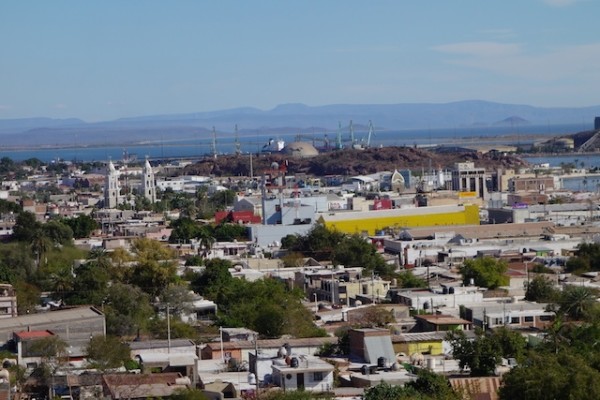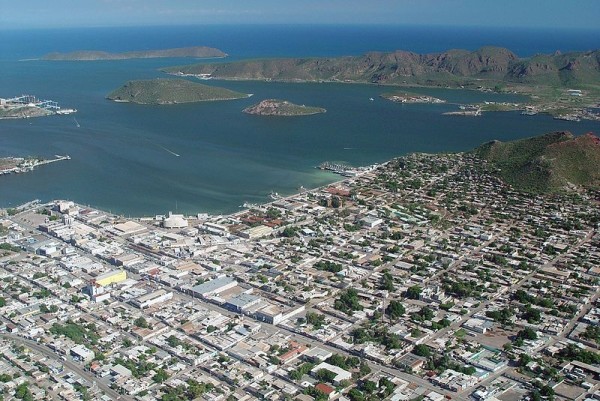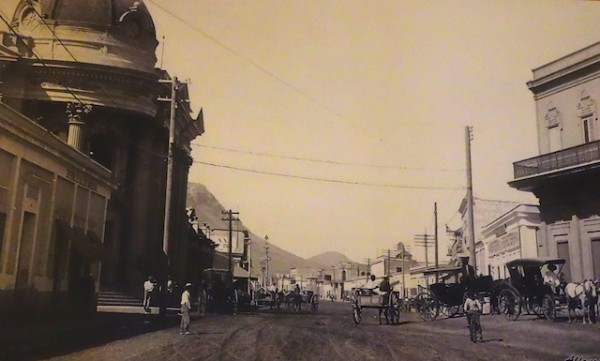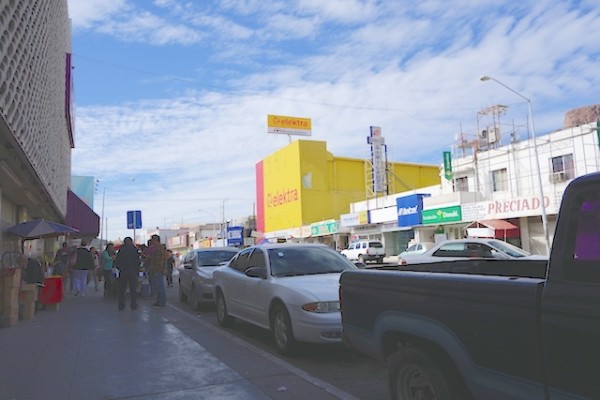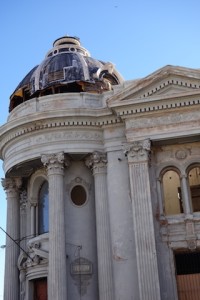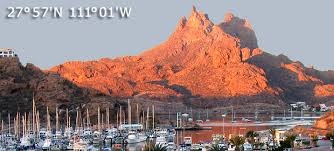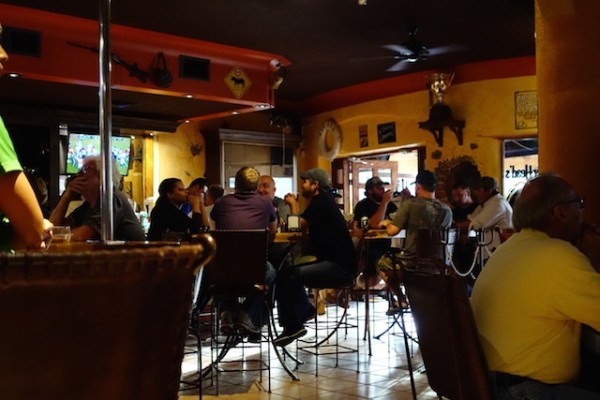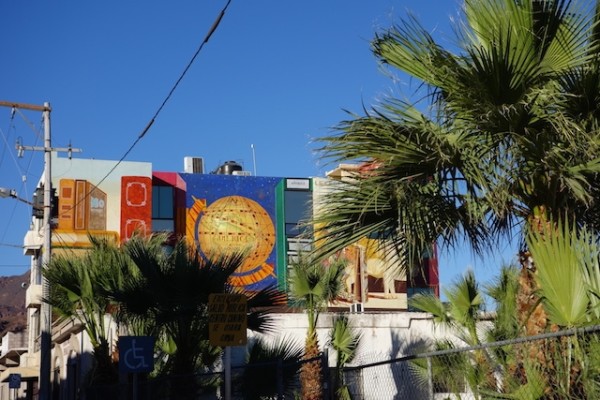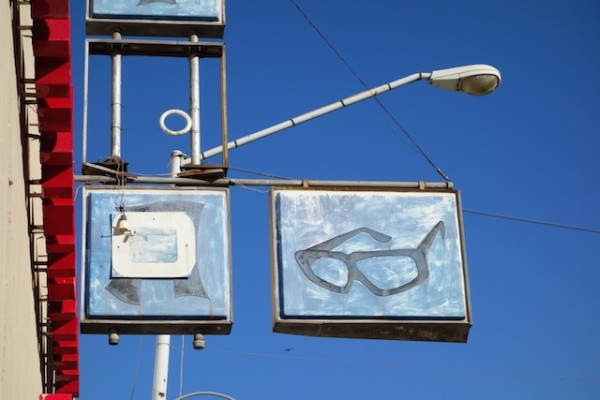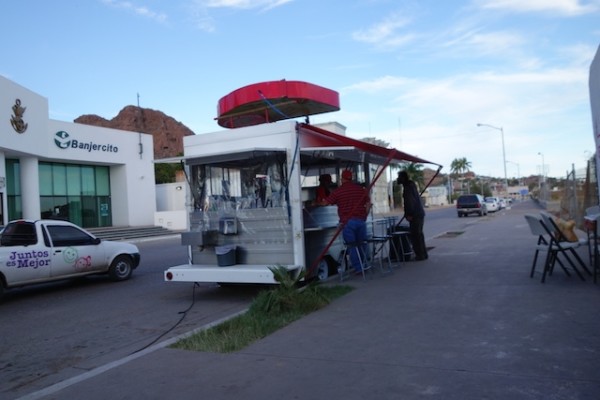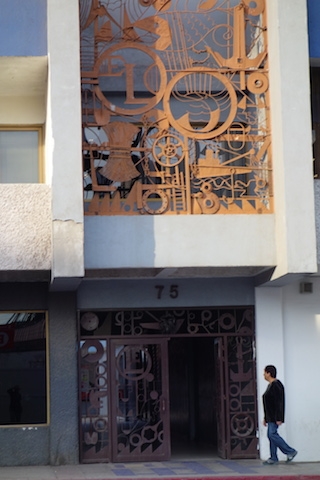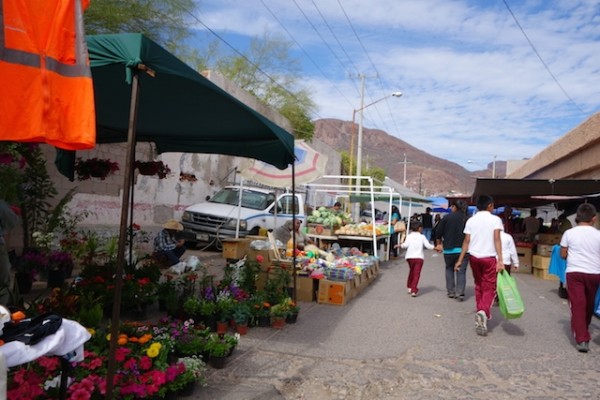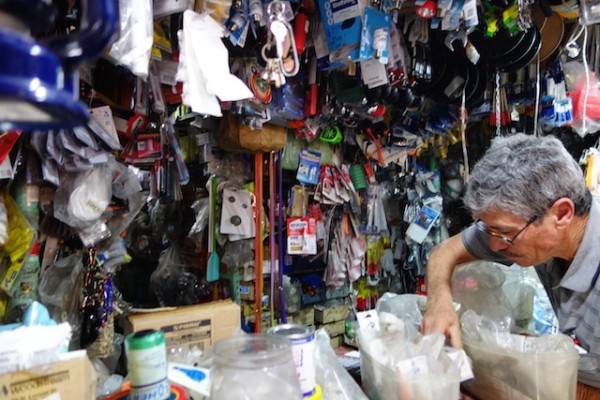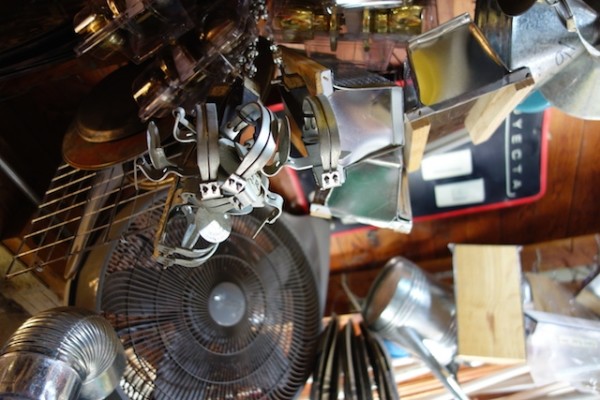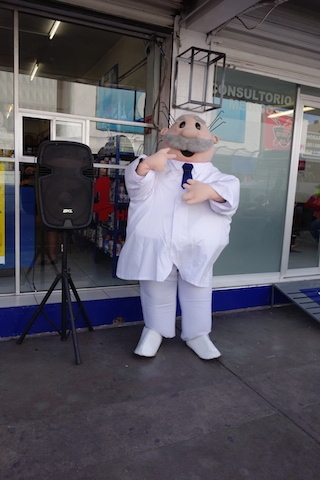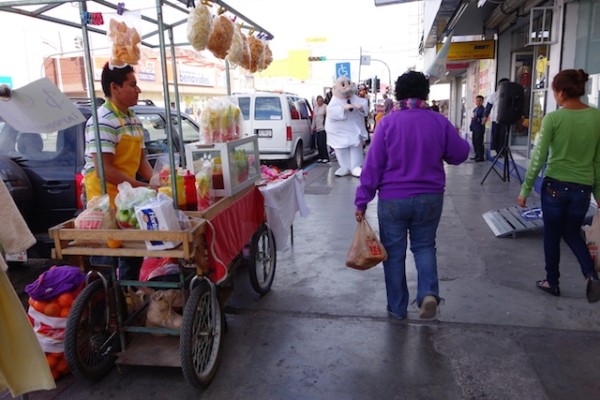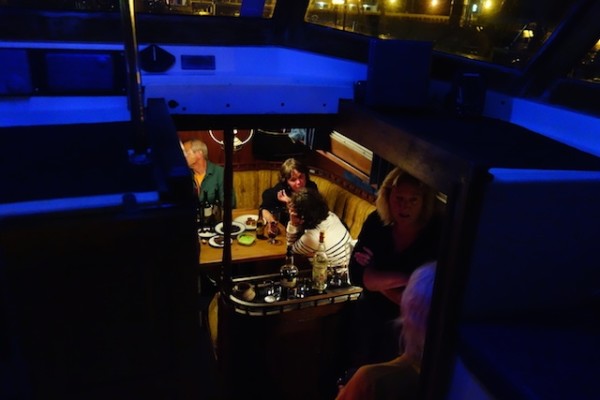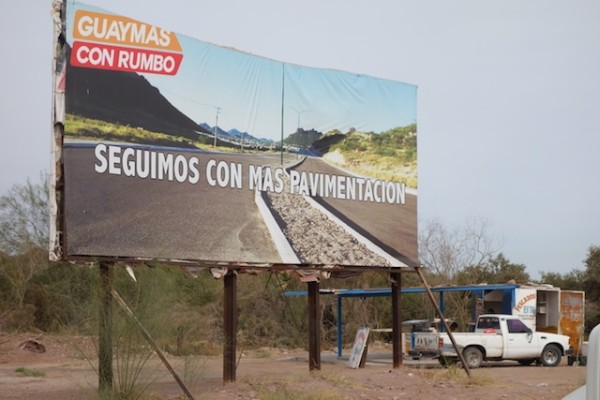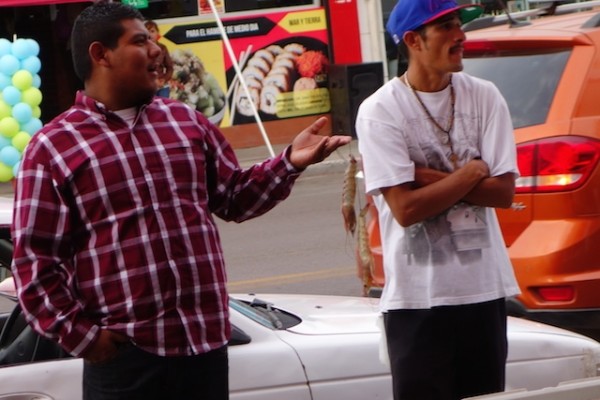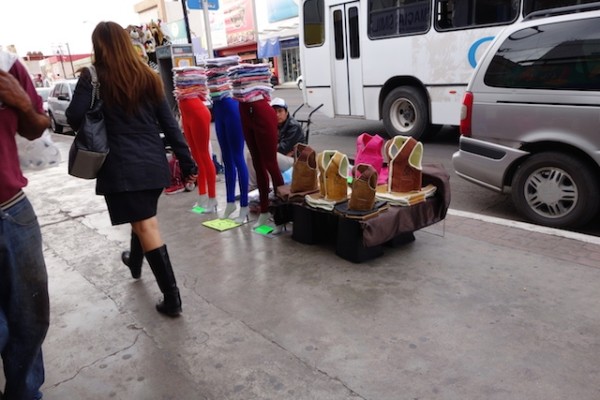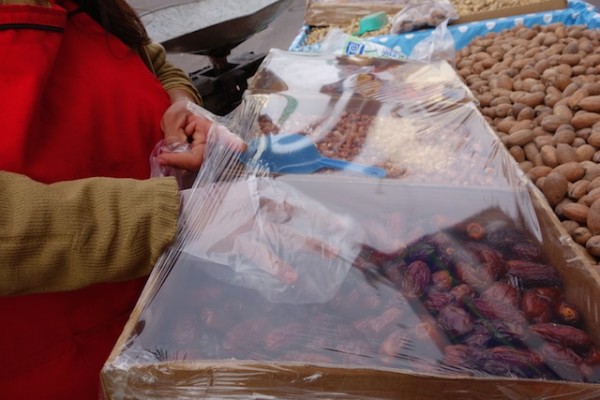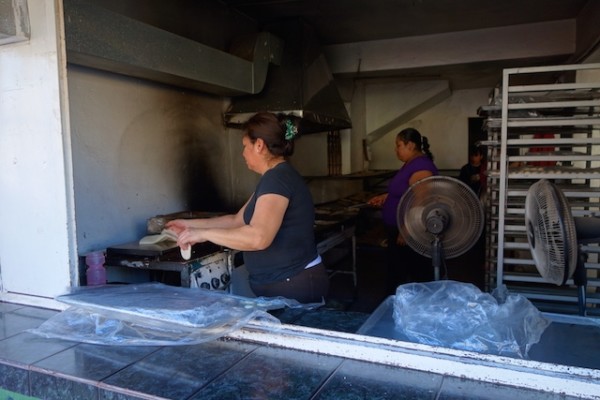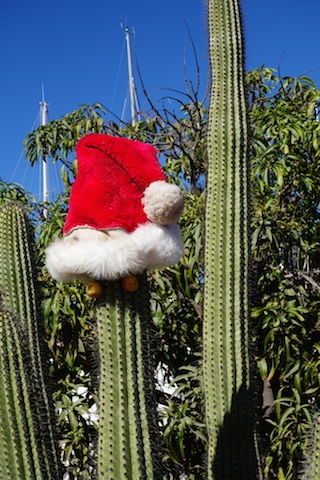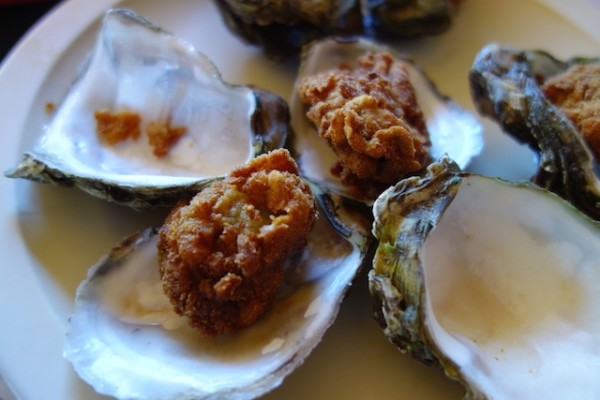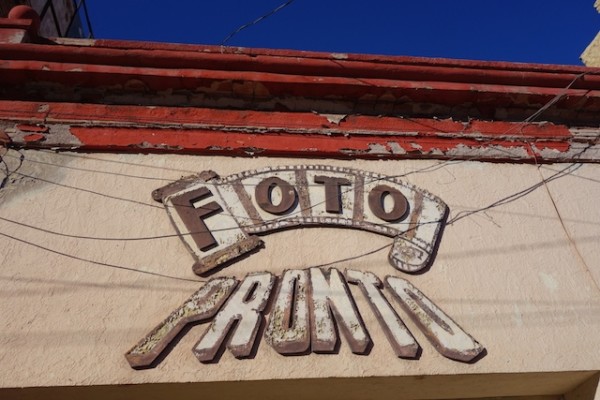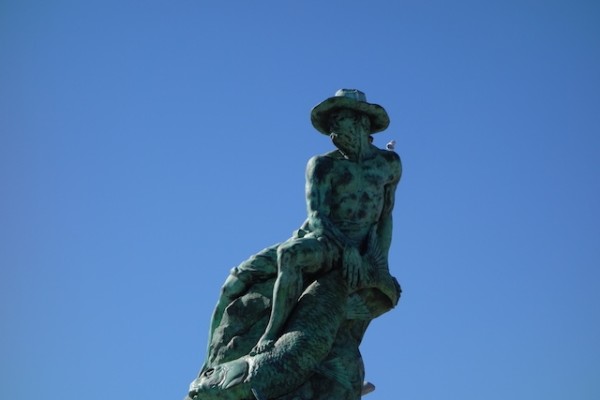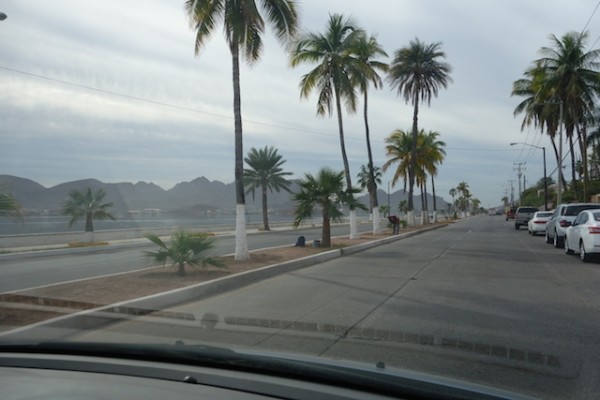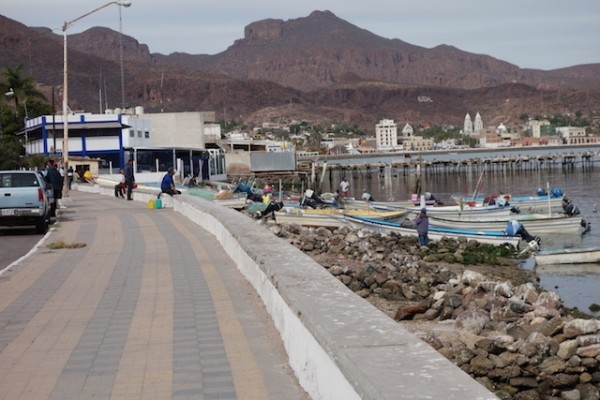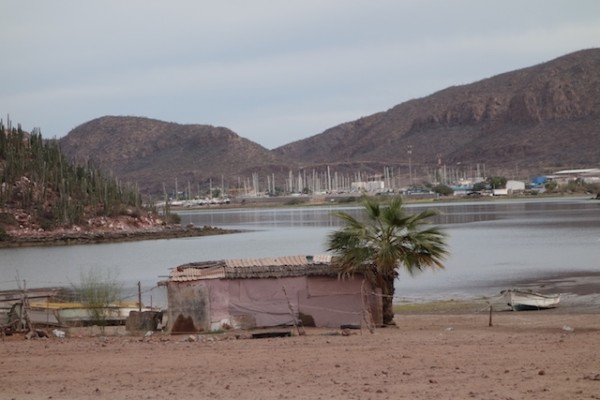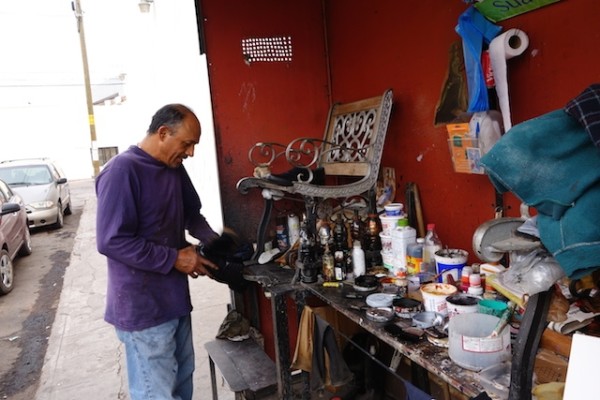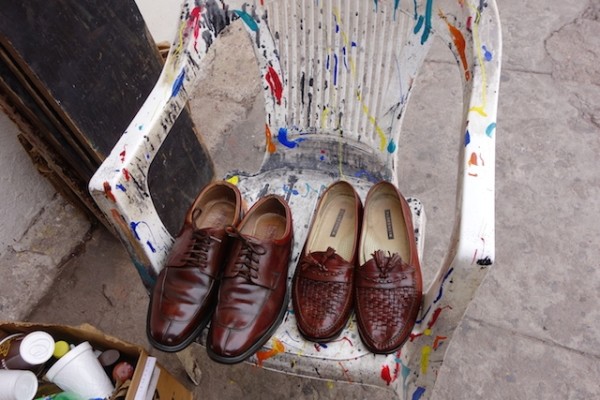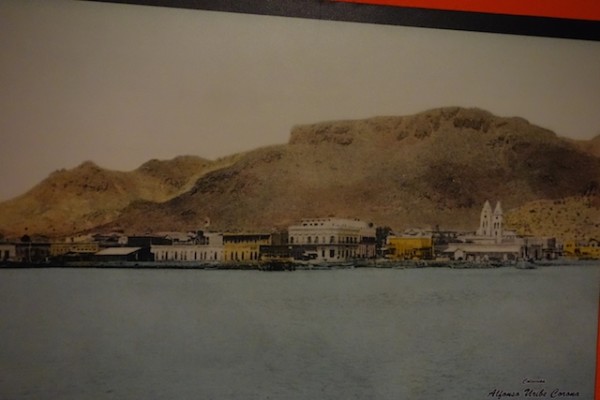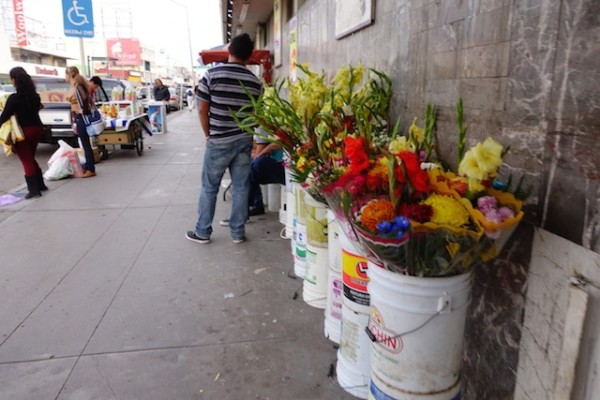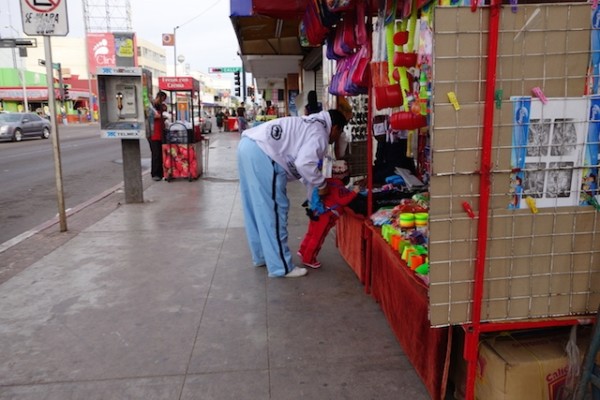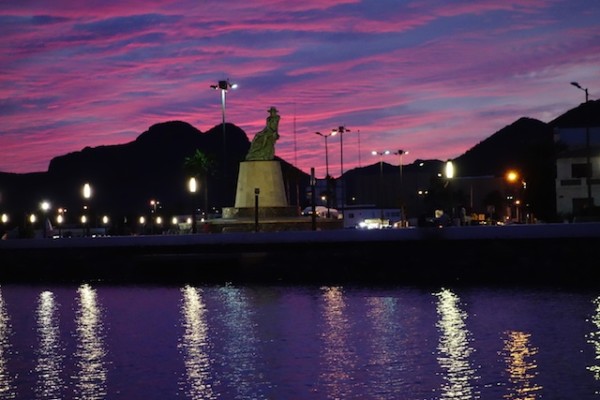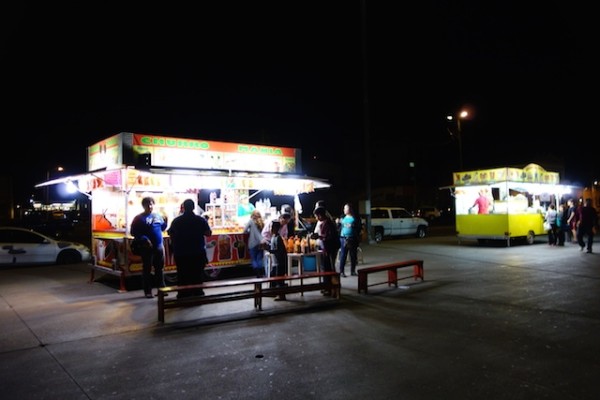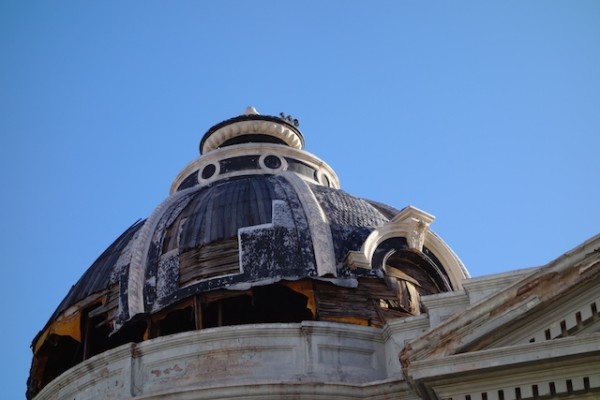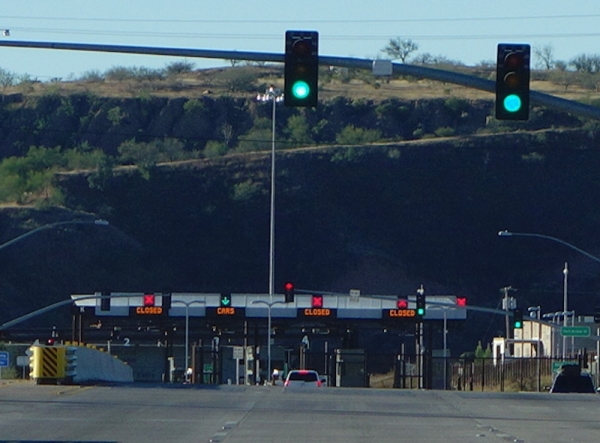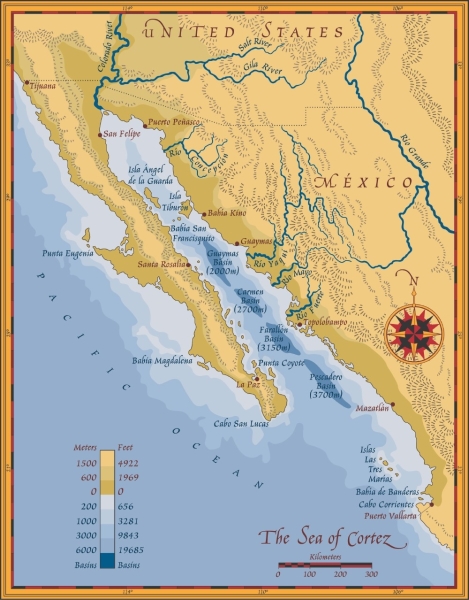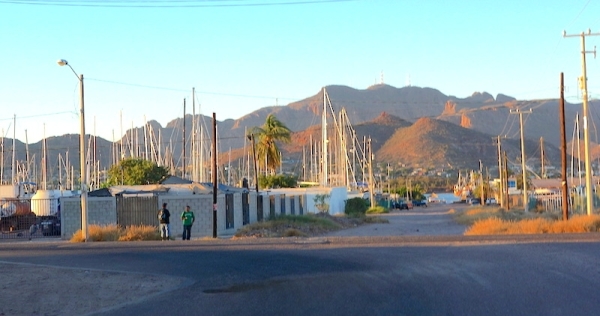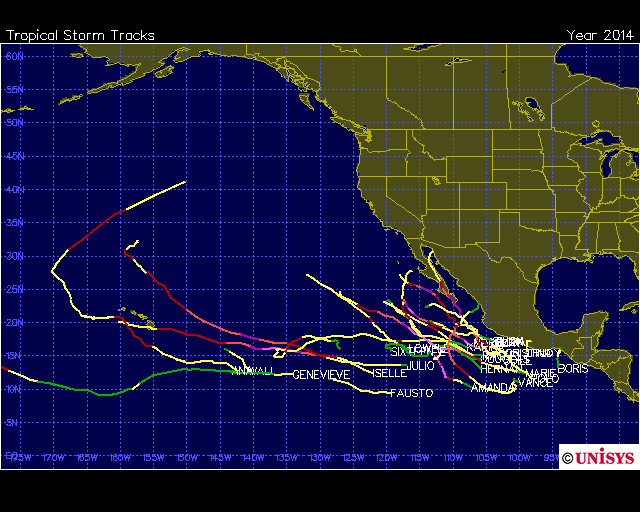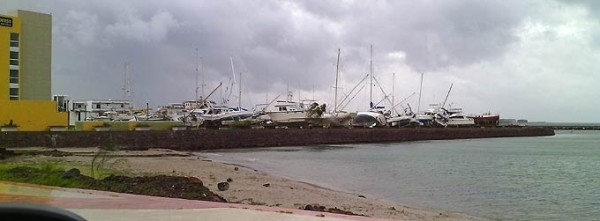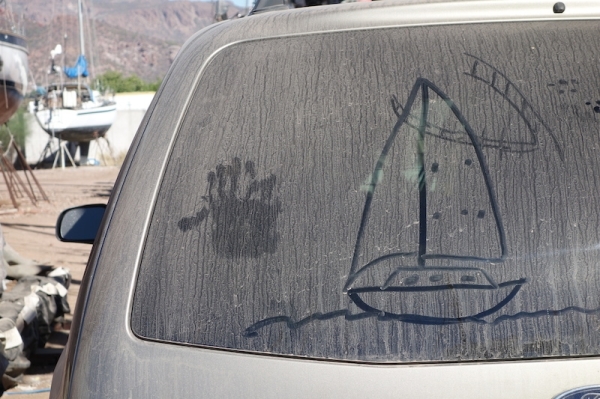In the spring, we left Galivant propped on stands, out of the water, in Guaymas for the summer, as we had done the year before. We drove back across the country to Maryland, smelling some roses on the way, to finish some house projects. And then in October we drove back in a minivan loaded with boat bits, arriving again in Guaymas at the end of the month, about when the Sonoran summer weather began to cool down to the 70s and 80s.
Flooding in Guaymas
We had seen photos of flooding in Guaymas, the result of over a meter of rain in just a couple hours on October 2, which left thousands at least temporarily homeless and roads washed out, according to thenews.mx. So we weren’t sure what we’d find.
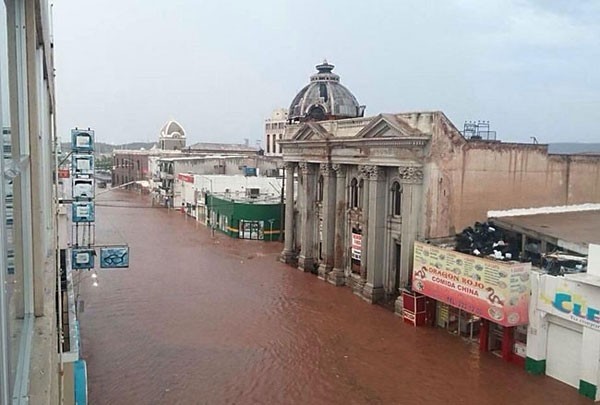

Everyone we asked in the downtown area pictured above just shrugged. In short, downtown was dried out and back in business with no problems readily discernible to the outsider.
Roadwork too
But there is a lot of new, and necessary, road work going on. There is major work on the road to the boatyard, involving an extensive excavation one foot over and three feet down from every passing tire. New water pipe awaits installation nearby. There were numerous shifting detours through pot-holed and puddled neighborhoods. Washed-out dirt-rock side roads are gradually being graded, even paved. Poles, piles of rocks, and other eclectic markers keep the alert day-time driver clear of missing manhole covers. Driving in town was quite the adventure this year.
The new gobernadora* may be the one responsible, or maybe it’s been in the mill for years, brought forward by the big rain. Certainly, everyone, –drivers and water users, roadside business owners, bus passengers and cyclists– anyone who uses the roads or depends upon those who do — will breathe a huge sigh of relief when the holes, ruts, potholes, and ditches are finally filled in and evenly paved.
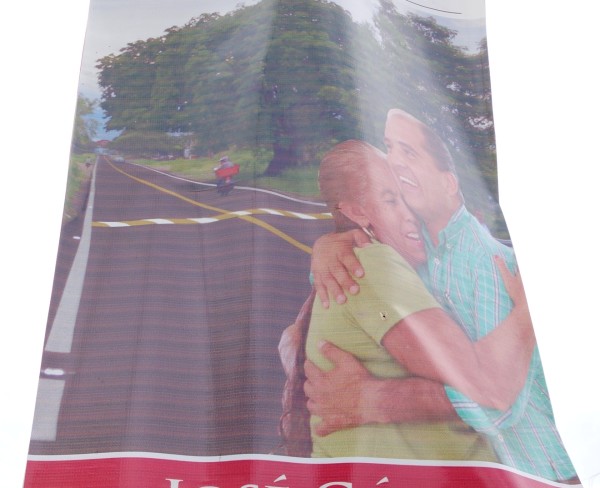
We spent a long month out of the water at Gabriel’s Marina Guaymas working on things. We still like it there, finding it a friendly and straightforward do-it-yourself yard. What’s to Like about living in the shipyard tells you more about that! Nonetheless, we’re not motivated to linger longer than necessary when there’s so much to see and do over the horizon.
Finally free to move, we faced a decision: should we head back to familiar places on the Baja side of the Sea of Cortez?
Last winter we stayed in the Sea of Cortez, and we enjoyed it thoroughly. We found the rugged Baja scenery striking, and liked the exotic emptiness of the landscape. I read as much as I could about the area (a lot about geology), and would like look around some more.
It was nice, but it was also – well, cold would be an exaggeration, perhaps an offense to those under the chilly mantle of actual winter. In fact, despite the occasional dips of overnight temperatures into the low fifties, the days were usually sunny and seventy plus – pretty pleasant in my book. But I do like to don my snorkel and mask, but not my wetsuit, and swim along the shoreline looking at whatever there is to see. And the water temperature never got above the mid-sixties, which is – cold! Too cold for a whiney woman in a lycra suit, anyhow.
So this year, lured by daily morning radio reports from other boats of balmy temperatures (“water in the pool 83 degrees”), we turned south from Guaymas.
Heading South
The trip out of the Sea of Cortez can be broken into comfortable legs with stops along the Baja peninsula, but we took the straight-down-the-middle approach, which made for a roughly 600-mile trip to Punta de Mita at the mouth of Banderas Bay. It took us five days.
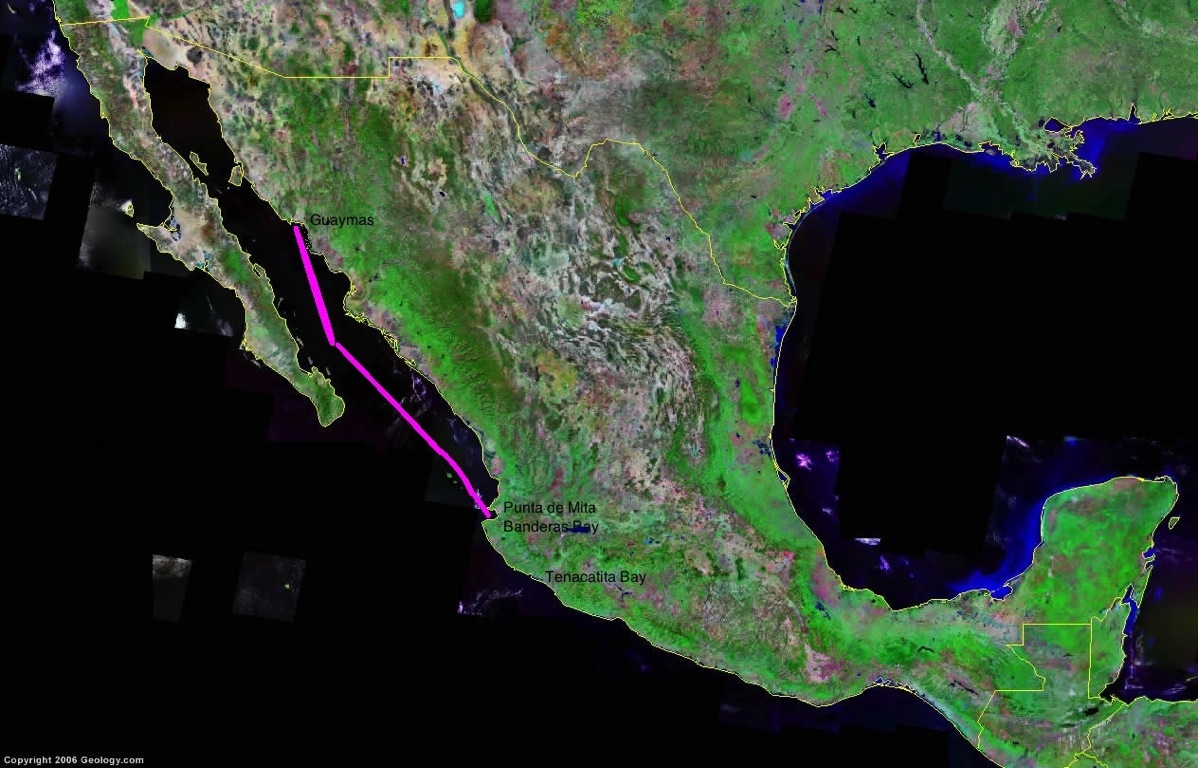
The winds at this time of year are almost always northwest or some variant thereof, which, since we were going southeast, might be considered a fair breeze. Driven by systems ‘across the fence’ (that’s how Geary the weather guy refers to the US and Canada), the northerlies can be strong and persistent. Those steady 20+-knot winds that send us south (and keep us there!) also chunk the seas up into short square blocks. “Seas five to eight feet at five seconds” is not an uncommon weather report, and one that makes for uncomfortable sailing conditions.
So when you wish your friends “fair winds”, make sure to add on “smooth seas” too. Also, by the time we got moving, the moon was in its last quarter, rising after 2 am and dimly, when not clouded over entirely. I seem to have spent a lot of time in my life waiting for a moon to rise, then being surprised by it when it does!
The trip south was a mix of screaming along downwind at the northern end and drifting along in not-enough wind at the southern end. We’re a little cautious (or is that lazy?) about sailing efficiently in the dark of night. It’s a complicated rig of hardware, poles and guys, that keeps the sails from crumpling as we roll off the waves. We mainly don’t want to have to spend much time on a rollicking foredeck when we can’t really see all that’s happening. So we tend to reef early and accept compromises to speed in the name of comfort.
Afloat in the universe
The occasional freighter bound for Guaymas or Topolabampo passed at a distance but otherwise, it was just us and our modest red, green and grey navigation and instrument lights. While one of us sleeps, the other sits alone in the dark in the middle of the sea contemplating the universe. I suspect there is sometimes napping as well.
Anyhow, there’s plenty to think about. The firmament, for one, beneath whose dome only we two know that we are here, a minuscule moving mote. I think about the generations long gone who studied and named the night sky, and of the eons beyond counting that the stars have endured, and will endure, beyond whatever we can do to our planet. So, alone, even melancholy, and yet exhilarated too, by the luxury of real darkness in this age of artificial light.
The heavens may be “empty” and silent, but the nearer world of water, ceaselessly sloshing inches away, is anything but quiet or still. The waves do the same thing over and over, only differently each time. It’s mesmerizing. The laws of physics seem quite reliable, gravity in particular.
Breathing metaphors come to mind, heaves and pants, hisses and sighs. It does seem wrong to associate the ocean with breath, because of course it’s the last thing you can do in it. So stay on the boat, keep the water out and maintain buoyancy throughout at all costs!
We always think these shortish coastal passages are harder on the crew than ocean passages lasting weeks. On the short haul, it’s harder to find the rhythm of sleep and watch-keeping, and closer to land, there are more ways to get into trouble. But short trips end soon enough, and then you’ll wake up to find someplace new and different.
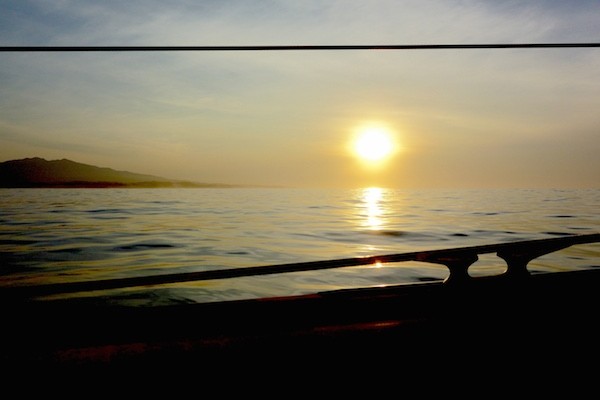
Footnote:
*There was a nationwide election in Mexico in June 2015, and the winner for governor in the state of Sonora was the PRI candidate, Claudia Pavlovich, the blonde woman on the political posters which sprouted on roadsides throughout the spring. Although she lost Guaymas proper to the PAN, she won statewide with about 47 percent of the vote.
According to Wikipedia:
Claudia Artemiza Pavlovich Arellano (born 17 June 1969) is a Mexican politician and lawyer affiliated to the Institutional Revolutionary Party (PRI). She currently serves as Governor of Sonora, the first woman to govern the state. Her family is of Montenegrin descent. [1] Previously she served as Senator of the LXII Legislature of the Mexican Congress representing Sonora.[2]
And the PRI is the party that ruled Mexico for much of the previous century. It is also the party of the country’s current president, Enrique Peña Nieto.

